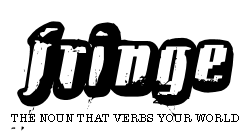- In "Tell Me If You're Lying," author Sarah Sweeney offers an honest portrait of her father in all his eccentricities, from his tales of alien abduction, to his obsession with seventies rock lyrics, to the simple fact of his marriage to her mother -- he had severe Crohn's and hid it. Presenting each personal myth her father built for himself, Sweeney seeks to distinguish reality from story, an impossible feat, perhaps, but then, luckily for us, it's the attempt itself that matters.
- Our poetry editor thinks that Pattabi Seshadri's poems use "concrete entities (chairs, birds) to convey something wistful and strange beyond the physical limits of the images." These playful and political images launch us into a space beyond reality. I particularly love the pregnancy of image of the papal throne in "Chairs," which compares the occupant to a child, but also, perhaps, to the opposite of "angel".
- Brian Parkison's longer poem, "Old Roman's Row" begins as a rather cinematic story poem, with Roman as epic hero, a trope the rest of the poem seeks to undermine, eventually ending with a tragicomic mishap. In between these two ends, Parkison suspends the reader in wonderful uncertainty of who Roman is, whether he is a hero or simply crazy.
- Our art editor accepted Jane Linders' X-Ray Terrestrial Series because these Polaroid transfers (of found animal skulls with illustrations of dental implants) positively haunted her, as they also do me. From the ordinary, fantastic beasts arise, made more macabre by the scientific diagramming. In a certain way, Linders has deconstructed her own images by playing on the expectations we have of the impartial scientific mind.
- Jen Michalski's story, "The Piano" is itself a deconstruction. X and Y literally uncouple when they break up, to become what my old metaphysics professor might call "a scattered relationship," in the same way that the piano also becomes a scattered object. Furthermore, in resisting names for her characters, Michalski deconstructs narrative meaning -- it is the positions of X and Y that matter in the story -- their names would be incidental. Perhaps these names also poke fun at our society's binary vision of gender, a system which a lesbian relationship necessarily disrupts, echoing Lois Gould's "X: A Fabulous Child's Story".
- William Walsh's "American Fried Questions" remixes portions of Calvin Trillin's text American Fried (1974). (Read it while it's here -- we'll be taking it down in a few months due to an agreement with Trillin's agents!) Walsh picks apart his source text, extracting Trillin's questions and rearranging them to make a wholly new collage, not fascinating because of the narrative the questions form, but for the textural (and textual) effect the disordering produces. The incompletness of questions without answers catapult the reader in and out of a hundred different conversations, lead the reader to marvel at Trillin's text -- after all, how can a unified work encapsulate so many questions?
- Doug Cornett's "Symptoms of the End" is, perhaps the most straightforwardly postmodern piece in the issue. After all, what is total deconstruction, but the end of the world?
So there it is -- Fringe 11 for your reading pleasure. Please enjoy, and let us know what you thought in the comments!


No comments:
Post a Comment